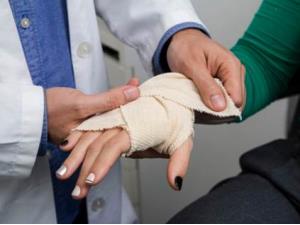Scientists have developed a new form of bandage which is capable of diagnosing bacterial infections by changing color. It also administers early medication that can potentially help combat antibiotic resistance in cases of infection and save thousands of lives.
The new ‘smart’ bandage can detect which bacteria are present in the body and releases early medication to prevent further symptoms. According to researchers in China, this development could lead to the ‘rational use’ of antibiotics. To elaborate on this, antibiotics are generally prescribed as a precaution until an infection is cured. However, this leads to bacteria becoming immune or resistant to certain antibiotics, which in turn makes it hard to cure an ailing patient.
Thus, the smaller dosage at an appropriate time frame can reduce needless overdose of antibiotics and make the phenomenon less frequent, as drugs nowadays are accelerating the process of immunity for bacterias. Currently, 700,000 deaths worldwide have been attributed to antibiotic resistance, making it one of the largest threats to global health, according to the World Health Organization (WHO).
Hence, tools like the new bandage which reduces the need for precaution and helps in the early determination of the infection may lead to more lives being saved in the future. Early testing of the bandage was done of mice that were infected with either drug-sensitive or drug-resistant Escherichia coli (E.coli) bacteria. The researchers then administered a material that can assess microenvironments, i.e, detect the bacteria on their wounds.
If the tests were on the drug sensitive E.coli, then the bandage turned green to yellow and released an antibiotic that killed the bacteria. On the other hand, if the drug-resistant bacteria were tested, the bandage turned red after coming into contact with an enzyme specifically produced by the drug resistant Escherichia coli. After this, the researchers exposed the bandages to light to release a chemical that weakened the bacteria to make them more vulnerable to medicine.
Timing is key when sensing and treating the bacterial infection, as a quick diagnosis can speed patient’s recovery and reduce the risk of spreading antibiotic resistant microbes. Notably, the new bandage is supposedly a low cost alternative to traditional methods of diagnosing and can rival even the more expensive and time consuming instruments used today.


